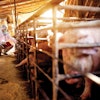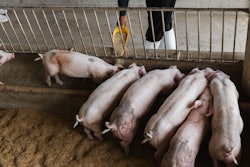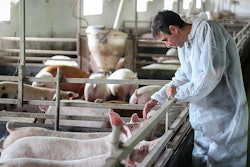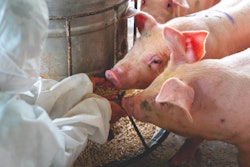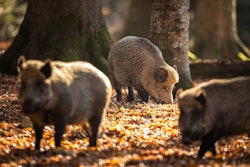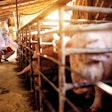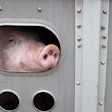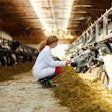
5 outbreaks on farms over the past month may indicate another resurgence in classical swine fever (CSF) in Japan’s domestic pigs.
Since the end of March, classical swine fever (CSF) has been confirmed on five commercial farms in four prefectures of Japan. Latest cases bring the country’s outbreaks to six so far this year.
Over the past week, the national veterinary agency has officially registered these latest outbreaks with the World Organisation for Animal Health (OIE).
At the end of March, the disease was detected in a herd of 1,100 pigs, two of which died, at Nara city in the prefecture of the same name. Within days, another outbreak was confirmed in Maebashi city in Gunma prefecture among a herd of almost 9,800 animals.
Since mid-April, CSF has been confirmed on three more farms. First to be affected was a breeding facility in Mie prefecture. Here, 32 of the 10,000 pigs died at the premises in Tsu city. No vaccination against CSF was practiced at the farm.
Comprising around 15,000 and 22,000 pigs, the other affected premises are located near the Tochigi prefecture city of Nasushiobara. They were reported to have epidemiological links.
At each of these locations, the farm owners reported unexpected mortalities. Subsequent testing confirmed the presence of the CSF virus, and all were identified as a wild-type virus. This suggests the source of the infection was in the environment — rather than any other route, such as mutation of a vaccine strain.
All five of these latest outbreaks occurred in two regions of the largest island, Honshu — in south-central Kansai, and in the central-eastern region of Kanto. They bring Japan’s total in domestic pigs since 2018 to 67. Directly impacted have been more than 232,000 pigs, which have been lost through mortality or culling.
Overview of previous CSF outbreaks in Japan
Around the turn of the year, Japan reported two new outbreaks of CSF on farms. These were the country’s first outbreaks for more than three months. Then at the end of January, CSF was confirmed at a farm producing piglets near Katswagi in Wakayama prefecture.
First cases of CSF were identified in Japan in September 2018. Elevated mortality at a farm in the central prefecture of Gifu was initially attributed to African swine fever. However, subsequent investigations identified the infection as CSF. Source of the original infection remains unknown. Japan had previously been free of this disease since 1992.
As well as these reported cases of the disease in domestic pigs, CSF has widely affected the country’s wild boar population since 2018.
According to the U.S. Department of Agriculture (USDA) Foreign Agricultural Service (FAS), 12 cases of CSF were reported in Japan during 2020. This represented a “significant” decline from 2019, when 59 cases were registered.
Developments in CSF control in Japan
When CSF is suspected at a farm, a shipment restriction zone (SRZ) is established 3-10 kilometers around each outbreak, and a movement restriction zone (MRZ) within it. If no virus-positive results are found by surveillance in the SRZ, these restrictions are lifted 17 days after stamping out and disinfection of the outbreak farm. Within the MRZ, restrictions are not lifted until 28 days of the same conditions.
Where CSF vaccination is implemented, no restriction zones are established.
A program of vaccination of wild boar was rolled out across Japan from early in 2019. Since October of that year, CSF has also been recommended for domestic pigs in 29 selected prefectures. These include Gunma, Mie, Nara, Tochigi and Wakayama. Okayama is scheduled soon to be added to this list of prefectures where vaccination is recommended.
The reduction in CSF cases between 2019 and 2020 is mainly attributable to government vaccination efforts that began in October 2019, according to FAS.
In September 2020, Japan lost its status as free of CSF from the OIE. This change came after a two-year suspension of status, during which the disease could not be brought under control. To regain its previous disease-free status, all CSF vaccination must cease, followed by a period of 12 months without any new cases.
CSF: impacts on Japanese pig population
Despite the introduction of CSF vaccination by the Tokyo government, almost 27,000 pigs were culled due to CSF between January 2020 and February 2021. FAS reports that this equates to around 0.3% of the national swine population.
In response, the country’s pig producers increased imports of live breeding animals by a factor of four last year to 2,521 head. Most of these were sourced from Denmark.
